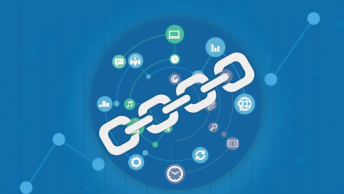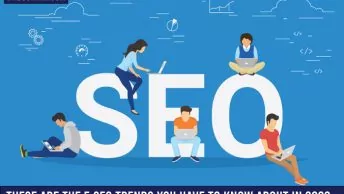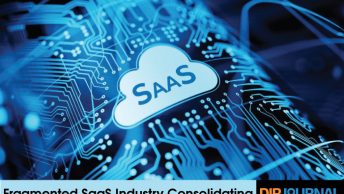Gamification in the workplace can be a great complement to a real world pat on the back. It has great motivational powers, and comes at a lower cost and is easier to scale than using physical engagement methods. According to Forbes, gamification uses the same motivational techniques we’ve known about for hundreds of years – building self-esteem and reinforcing it with recognition from peers.
Gallup reports ? of employees are not engaged, or are actively disengaged in the workplace. Gamification is one of the ways organizations can work to improve their employee engagement, which can improve the bottom line. Mass retail giant Target uses gamification with cashiers, as it is generally a disconnected job. The cashiers see a red or green at the end of each checkout, indicating whether they took care of the customer in the optimal time or not. It provides immediate feedback, and uses basic gamification features to get the job done, thus encouraging employees to do better, for their own personal satisfaction and the possibility of reward.
Basics of Gamification
According to Merriam-Webster, gamification is “the process of adding games or game like elements to something (as a task) so as to encourage participation.”
- Define the goals you want to accomplish.
- Develop a method of gameplay, factoring in the types of gamers.
- Develop a clear, concise reward system, with transparency for employees.
To work for your business, enterprise gamification must be approached methodically. You must first identify what goals you want to accomplish with the game, and develop a game that not only helps you accomplish those goals in a way employees find entertaining, but remains transparent so all employees know what’s going on, and provides tangible, real world rewards. If you have a digital currency, whether it’s gold bars or points, make sure employees know what they get for earning those things – whether it’s gift cards, or an all expense paid vacation.
Nike has gamified its fitness band, FuelBand. The game is powered by user’s movement, and uses “NikeFuel” to track progress. Users are challenged to earn a certain amount of fuel to move to the next level, and each mission/level is played against a clock. After each mission, they use their Nike+ device to track progress, and if they haven’t reached the goal, are given the chance to replay the mission.
Weight Watchers uses an online tracker tool for its customers. Each time the customers reach a weight loss milestone, such as five pounds lost, 5% of weight lost, etc., the customer gets a badge to display on their community profile. While there are no rewards, other than personal satisfaction and bragging rights, this plays on the human desire to have accomplishments recognized, and uses basic gamification elements to do it.
Photo Credit: Pixabay
Effective Ways to Engage Your Organization
It’s best to focus your efforts not on the top performers, not on the bottom performers, but the middle of the pack. Middle performers produce an average of 1,300 productivity units per month, meaning the 60% middle of your company produces 60% of your performance – whereas the top 20% produce 33%, and the bottom 15% produce only 7% of your performance. Focus on motivating those middle employees and train them to improve their capabilities. Give them meaning work, and meaning at work.
Competition may make sense with a naturally competitive salesforce, but it’s not always the practical approach. To foster the sense of accomplishment and recognition, it’s better to focus on completion, rather than competition, since it’s not about your top performers. Team approaches work better than individual ones, because transparency comes into play.
Disadvantages of Gamification
Gamification, when implemented correctly, can be highly beneficial to your business. It’s when the game isn’t designed correctly, lacks planning and strategy, or features bad processes or unrealistic expectations that it is doomed to fail. It must encourage specific behaviors to achieve goals, be designed for your employee target audience, reinforce good business processes, and be realistic.
In other words, don’t just plan a game and launch it, because it’s a game. You won’t accomplish the return on investment, if you don’t clearly outline and define what it is you need the game to help you with. You won’t get participation from employees if you design a puzzle game and your employees hate puzzles. Make sure your business processes are working efficiently before using the game to encourage employees to follow them. If your sales process isn’t optimized, you’ll just make the process worse using gamification to reinforce it.
Omnicare, a pharmacy management software company, turned to gamification to help improve customer service wait times. They used a leaderboard and gave cash to the employees who worked the fastest. Sounds great, right? Except employees didn’t like it – they saw it not as a positive thing, but rather another way for “Big Brother” to watch them, which led to even longer customer service wait times. Eventually, they changed their gamification approach, and focused on rewards for achievements, instead of timing.
How to Integrate Gamification into Your Workflow
Think about places in your current workflow where gamification could help. For example, do you need help training employees, or do you want to motivate your sales team to work smarter, not harder? The ideal way to integrate gamification lies in creating a game that works with something you’re already doing – not creating a new task for which a game can be applied.
Pharmaceutical company Astrazeneca used gamification to teach their new agents about medicine. Through earning points to reach a stadium – representing the launch event of a medicine – by playing a series of mini-games on the features of a new product. The game resulted in 97% of the agents participating, with a 99% completion rate.
InsideView gamified employee social media activity and increased employee updates by 312%.
Gamification can be used to accomplish a number of goals within your business, including: employee recruitment and training, sales, customer service and support, and social media, to name a few. Take the time to plan a gamification strategy rather than jumping in head first, and talk to employees about what they’d like to see to ensure you’re creating a game they’ll be glad to play. Don’t expect gamification to happen overnight, and factor in any special needs your company may have.








